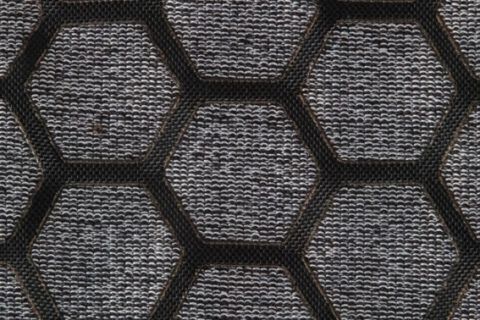The fabric exploits the same aerodynamic principles as a golf ball, the dimpled surface of which enables it to travel further in the air by creating turbulence that reduces its drag. Since the fabric is soft and elastic, it can be moved and stretched by its wearer to change the size and shape of the dimples on its surface on demand, even when it fits tightly to the skin. During testing in a wind tunnel, the researchers found that the dimples could reduce the aerodynamic drag of the fabric by up to 20%.
A graduate student at SEAS and the lead author of a paper(1) describing the work, David Farrell, says: “By performing 3000 simulations, we were able to explore thousands of dimpling patterns. We were able to tune how big the dimple is, as well as its form. When we put these patterns back in the wind tunnel, we find that certain patterns and dimples are optimised for specific wind-speed regions.”
The composite fabric is easy and inexpensive to produce. It comprises a stiff polyamide (PA) fabric woven from 77-dtex yarn and a durable, compliant, knitted elastane fabric with a near-isotropic mechanical response. A laser is used to cut hexagonal or triangular apertures into the woven PA to yield a lattice pattern. Using an adhesive pre-applied to the back surface of the PA fabric, the lattice is then bonded to the elastane knit using a heat press. To create tubular samples, the composite fabric can be formed into a cylinder and then sewn using a flat overlock stitch that is elastic along the axial direction of the cylinder, while remaining stiff in its circumferential direction.
The team has tested numerous samples featuring differently shaped lattices to explore how different tessellations affect the mechanical response of each textile.

